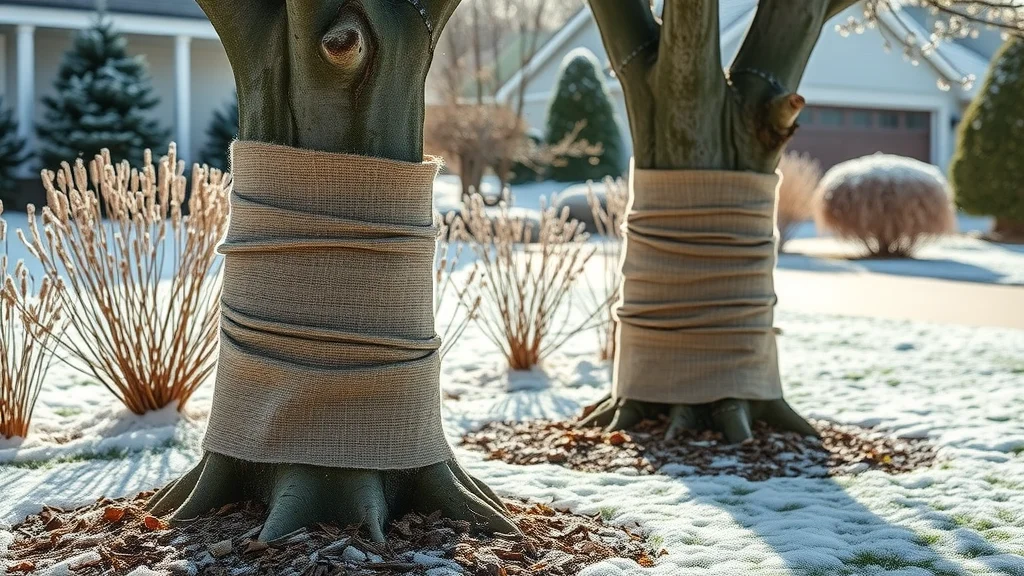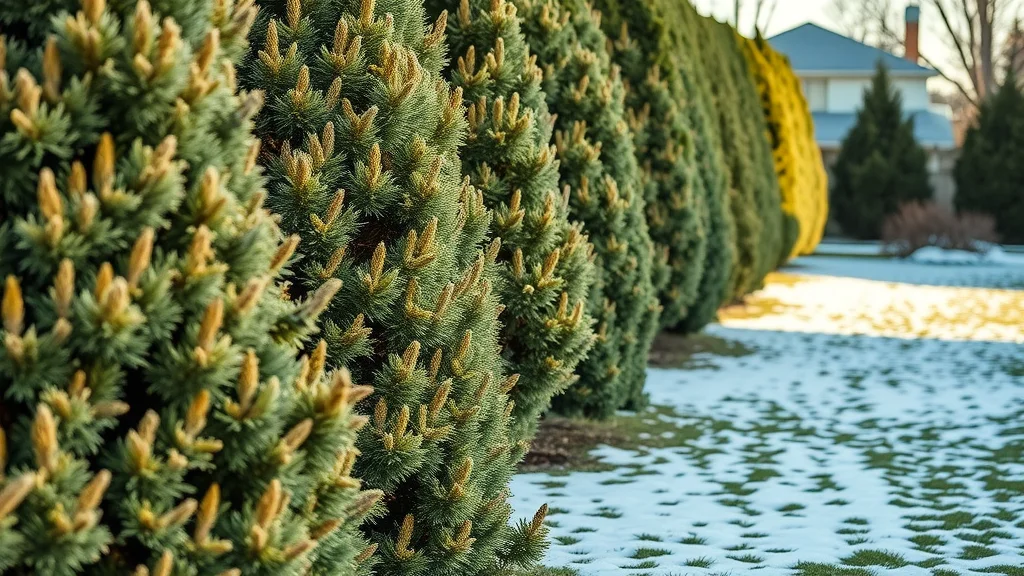Did you know that improper seasonal tree care results in up to 30% of urban tree loss annually? This surprising fact highlights the power—and importance—of proactive, well-timed tree care for every garden. Whether you’re a passionate gardener or a homeowner looking to protect your landscape investment, mastering seasonal tree care is key to ensuring your trees thrive year after year. In this comprehensive guide, you’ll discover the expert strategies and science-based methods that not only keep your trees healthy, but also help them weather the toughest seasonal challenges. Read on to uncover professional secrets, avoid costly mistakes, and grow your tree care know-how for each time of year.
Unveiling the Science Behind Seasonal Tree Care
"Did you know that improper seasonal tree care results in up to 30% of urban tree loss annually?"
The science behind seasonal tree care revolves around understanding the biological cycles trees undergo throughout the year and adapting care practices accordingly. Trees, like all living organisms, respond to environmental cues such as temperature changes, rainfall patterns, and daylight length. Using this knowledge, gardeners and certified arborists can tailor processes such as tree trimming, fertilization, and disease management to support tree health at the optimal stages. For example, spring is the perfect time for pruning back dead branches after winter dormancy, while summer focuses on preventing heat stress and drought damage.
Modern research confirms that each tree species reacts differently to seasonal shifts; some need extra protection during the winter months, while others require targeted inputs in the growing season. By following the science, you can avoid common pitfalls—like improper early spring pruning or late fertilization—that can compromise tree health or lead to the need for costly tree removal. In the competitive world of garden maintenance and landscaping, understanding and applying the principles of seasonal tree care gives your trees and shrubs the best possible chance to flourish.
What You’ll Learn About Seasonal Tree Care
- Why tree care strategies must adapt to each season
- How to identify the optimal time of year for seasonal tree maintenance
- Step-by-step spring tree care and fall tree preparation
- Best practices for protecting trees and shrubs in extreme weather
Understanding the Importance of Seasonal Tree Care

- Impact on tree health and longevity
- Role of certified arborists and professional tree care services
- Benefits for garden ecosystems
The difference between a thriving garden and one struggling with diseases and dying branches often comes down to consistent, intelligent seasonal tree care. When you invest in the right routines throughout the year—like timely tree trimming and scheduled fertilization—you greatly enhance the lifespan and vigor of your trees and shrubs. Proactive measures prevent issues such as pest infestations, root rot, and damage from snow and ice, giving your trees an extra layer of resilience against environmental stresses.
Consulting a certified arborist or engaging a reputable tree care service can be invaluable, especially for diagnosing difficult problems, recommending the proper tree species for your locale, and ensuring safe, effective tree removal if required. Beyond aesthetics, healthy trees provide ecosystem benefits: they offer shade, improve air quality, stabilize soil, and create habitats for birds and wildlife. By focusing on seasonal tree care, you support not just the beauty of your home, but the broader health of your entire garden environment.
For those looking to master the practical side of tree care throughout the year, you may find it helpful to consult a detailed, step-by-step resource. The Seasonal Tree Care Guide: Master Every Season With Ease offers actionable checklists and expert advice to help you confidently tackle each season’s unique challenges.
Expert-Recommended Tools and Equipment for Seasonal Tree Care

- Pruning shears and saws approved by certified arborists
- Tree trimming safety gear
- Specialized garden tools for winter tree care
- Fertilization and mulching supplies for all time of year
Effective seasonal tree care starts with the right tools. Quality pruning shears and handsaws, especially those recommended by certified arborists, ensure you make clean cuts that reduce the risk of disease and encourage robust regrowth. Safety gear like gloves, goggles, and helmets protect you during tree trimming—particularly when climbing ladders or reaching high branches. In the winter months, specialized insulation wraps, frost cloth, and sturdy rakes come into play for protecting tree roots and trunks.
Additionally, investing in proper mulching and fertilization equipment matters year-round. Organic mulches help retain soil moisture in summer and serve as insulation in winter. Fertilizer spreaders and soil testers let you give your trees exactly what they need, tailored to the current season. Keep all your tools clean, sharp, and ready, as using the correct equipment is a vital part of professional tree care that keeps your landscape healthy and safe through every time of year.
Seasonal Tree Care Planning: How to Create a Year-Round Schedule
| Season | Essential Seasonal Tree Care Tasks | Best Time of Year |
|---|---|---|
| Spring | Tree pruning, fertilizing, insect inspection | March–May |
| Summer | Mulching, watering, pest monitoring | June–August |
| Fall | Tree trimming, planting new trees, root care | September–November |
| Winter | Protection from frost, structural assessment | December–February |
A successful year-round seasonal tree care plan organizes essential maintenance tasks by season, ensuring nothing is left to chance. Start each spring with a complete tree inspection and pruning session, targeting winter-damaged and diseased branches. Apply appropriate fertilizers to boost recovery and support the new growing season. In summer, focus on regular deep watering, effective mulching, and vigilance against pest invasions—especially during long dry spells or heat waves.
Come fall, it’s a great time to plant new trees and refresh soil health around roots. Fall also calls for tree trimming before trees enter dormancy, and strategic fertilization to strengthen roots. As winter approaches, protect trees using insulation wraps, remove heavy snow from branches, and conduct a structural check to prevent weather-related failures. Keeping a printed schedule or using a garden planner helps you time every task precisely so your trees and shrubs stay strong and resilient all year long.
Spring Tree Care: Revitalizing Growth After Dormancy
Essential Spring Tree Care Techniques
- Tree trimming to remove winter damage
- Applying fertilizers for optimal spring tree health
- Certified arborist inspection for pest and disease management
"Spring tree care is the foundation of a productive growing season," notes a prominent certified arborist.

As nature wakes up, spring becomes a critical period for rejuvenating trees after months of dormancy. Begin with a thorough inspection to spot broken limbs and diseased branches caused by winter stress. This is the perfect time to trim and shape trees, ensuring you do not remove too much new growth. Using sharp, sanitized shears, cut back damaged wood to promote healthy regrowth during the early spring surge. Focus especially on young trees and shrubs, which recover faster and set the foundation for vigorous development throughout the growing season.
Fertilization is especially important right after winter, as depleted soils may lack key nutrients for robust leaf and root formation. A balanced slow-release fertilizer, matched to your tree species and soil type, kickstarts the season. For best results, consult a certified arborist or use a reputable tree care service if you’re uncertain about specific needs. They will also inspect for pests such as borers or aphids that become active in early spring. By combining proactive pruning, proper nourishment, and expert assessment, you give your trees the best start possible for months of healthy, lush growth ahead.
Summer Seasonal Tree Care: Protecting Against Heat and Drought
Watering and Mulching for Summer Tree Health
- Best time of year to water deeply
- Choosing mulches for moisture retention
- Recognizing heat stress in trees and shrubs
With rising temperatures, tree health in the summer relies on preventing water loss and shielding roots from excessive heat. Early mornings or evenings are the best time of year to perform deep watering, targeting the base of trees and the full root zone. Use a soaker hose or drip irrigation system to minimize evaporation and ensure every drop reaches the roots rather than just wetting the surface. For new or delicate trees, consistent watering is vital to help them thrive during long dry stretches.
Mulching plays a crucial protective role: spread a 2–4 inch layer of organic mulch (like bark or shredded leaves) around the root zone, taking care to keep it a few inches away from the trunk. The right mulches keep in moisture, lower soil temperature, and reduce weed competition. As you monitor your garden, watch for signs of heat stress in trees and shrubs—wilted leaves, browning edges, or premature leaf drop. Respond quickly by increasing water frequency and checking mulch coverage when these symptoms appear. Regular summer care now helps your garden withstand even the harshest heat waves.
Fall Tree Care: Preparing for Dormancy
Fall Tree Trimming and Fertilization
- Proper timing for tree trimming and pruning
- Soil nourishment strategies for trees and shrubs
- Winterizing techniques with help from a certified arborist

Fall is widely recognized as the ideal season for tree trimming and essential root care, preparing trees and shrubs for the dormant winter months. As leaf drop begins, identify and remove weak, overcrowded, or crossing branches. Pruning at this time minimizes disease risk and helps trees conserve energy, channeling all nutrients down to the roots over winter. The fall season is also the best moment for planting new trees, allowing roots to establish in cool, moist soil while above-ground growth pauses.
After pruning, enhance soil fertility by top-dressing with organic compost or applying a specialized autumn fertilizer. Focus on low-nitrogen blends that encourage root development rather than excessive leaf growth. These soil nourishment strategies strengthen your trees’ resilience and help them emerge vigorously with the next growing season. For added insurance, enlist a certified arborist to assess your property and recommend additional winterizing techniques such as applying anti-desiccant sprays or wrapping trunks in vulnerable, exposed areas.
Winter Tree Care: Preventing Cold Weather Damage
Expert Tips for Cold Season Tree Health
- Insulating roots and trunks against frost
- Professional tree care service for snow and ice management
- Identifying winter tree health warning signs

Winter poses unique threats to tree health, from bone-chilling frosts to heavy snow and ice accumulations. Applying a thick layer of mulch around the base of trees forms a buffer that prevents soil from freezing and thawing rapidly—which can damage roots. For sensitive or young specimens, wrapping trunks with burlap or commercial tree guards protects bark from cracking and deters rodents from gnawing during the scarce winter months.
If snow and ice build-up threatens to break branches, call in a professional tree care service for safe removal rather than risking injury or further foliage loss. Keep an eye out for early warning signs such as oozing sap, visible frost cracks, or limp branches. Recognizing these red flags lets you intervene before issues escalate, cutting your losses and improving success rates come spring. With diligent winter care, your trees and shrubs will endure and bounce back stronger than ever.
Working With a Certified Arborist for Seasonal Tree Care Excellence
- Benefits of consulting certified arborists
- Professional tree care vs. DIY seasonal tree care
- Choosing reputable tree care services

While many tree care tasks are simple enough for DIY gardeners, complex issues—like diagnosing fungal infections, performing high-risk tree trimming, or planning for mature tree removal—are best left to certified arborists and professional tree care services. Arborists not only possess ISA certification, indicating advanced technical training, but also bring specialized knowledge about local tree species and regional threats.
Engaging a reputable care service provides peace of mind, ensures compliance with safety standards, and can save you money by preventing unnecessary mistakes or the need for repeat work. Consider scheduling annual checkups with certified arborists to keep your trees thriving throughout all seasons. For larger properties, building a relationship with a trusted tree care company means your landscaping is always in expert hands, reducing risks and ensuring a lush, vibrant garden year after year.
Top 10 Seasonal Tree Care Mistakes to Avoid
- Skipping seasonal inspections
- Improper timing of tree trimming and pruning
- Neglecting fertilization cycles
- Poor mulching choices
- Ignoring signs of disease
- Using unapproved tools
- Forgetting professional tree evaluation
- Over-or under-watering trees and shrubs
- Fertilizing at the wrong time of year
- Neglecting winter preparation
Even experienced gardeners can fall into common traps when it comes to seasonal tree care. Avoiding just a handful of mistakes—like skipping regular inspections or failing to use the correct pruning techniques—can dramatically boost your trees’ longevity and reduce costs on emergency services. Remember, each season brings its own best practices and pitfalls, so following expert guidance is crucial to ensuring your trees and shrubs receive exactly the support they require, when they need it most.
Investing in the right tools, timing your care based on local climate and species, and seeking frequent professional advice are all ways to dodge these common errors. A well-prepared garden plan that accounts for every time of year ensures your landscape is not just attractive, but resilient and sustainable far into the future.
People Also Ask: What Is the Best Time for Seasonal Tree Care Tasks?
What month is best to trim trees?
Generally, late winter to early spring—between February and March in most regions—is considered the best time of year for tree trimming. At this stage, trees remain dormant, which reduces stress and allows wounds from pruning to heal quickly. Trimming before new growth starts also lets gardeners shape trees for healthy expansion in the energetic growing season ahead. However, exact timing may vary depending on your tree species and climate, so consulting a certified arborist remains a smart practice.
How to keep trees alive during winter?
The key to winter tree health is proactive protection and monitoring. Start by mulching heavily at the base of trees to insulate roots from deep freezes and fluctuating soil temperatures. Wrap young or delicate trunks with burlap or tree guards to prevent frost cracks and sunscald. After snow and ice storms, gently brush off heavy accumulations to protect tree branches from snapping. Finally, inspect trees regularly for any signs of winter damage or stress and consult professional tree care services for complex or hazardous problems.
What are the 5 rules of pruning trees?
The five fundamental rules of proper pruning are: (1) prune at the right time of year—typically during dormancy; (2) use clean, sharp tools to make clean cuts; (3) remove dead, diseased, or crossing branches first; (4) never remove more than 25% of the tree canopy at once; and (5) consider the natural shape of the tree, avoiding excessive “topping” or severe reshaping. Following these rules ensures tree health, structural integrity, and vigorous regeneration.
Should I fertilize my trees in the winter?
In most climates, fertilizing trees during the winter months is unnecessary and can even do more harm than good. Trees are dormant and do not actively absorb nutrients, so applying fertilizer before spring is not recommended. Focus instead on fertilizing in late winter or early spring, right as trees prepare for active growth. If in doubt, a certified arborist or professional tree care service can conduct soil tests and recommend the ideal timing and type of fertilizer for your specific trees and shrubs.
Video Guide: Seasonal Tree Care Essentials
Watch and learn: This video features a certified arborist demonstrating spring care, precise tree trimming, mulching techniques, and thorough winter preparation steps. You’ll see clear visuals of expert techniques and transformations in real gardens—across all seasons—so you can follow along and give your trees the best year-round care.
Certified arborist demonstrates seasonal tree care essentials in diverse garden settings.
FAQ: Seasonal Tree Care for Trees and Shrubs
-
Does seasonal tree care differ between deciduous and evergreen species?
Yes. Deciduous trees require more attention in fall (for leaf and limb cleanup) and spring, while evergreens need protection from winter drought and windburn. Always tailor maintenance to your trees’ unique biology and consult a certified arborist for best results. -
How often should I hire professional tree care services?
At least once per year for comprehensive inspections, but more frequently if you notice major changes, damage after storms, or signs of disease. Certified arborists can spot issues early, saving time and money on future tree removal or emergency work. -
Is it safe to trim trees after heavy storms?
Always exercise caution following storms. Remove obvious hazards like broken limbs from the ground, but avoid major trimming—or climbing—until conditions are safe and you have assessed for structural weaknesses. Severe damage should always be addressed by professional tree care services.
Key Takeaways for Effective Seasonal Tree Care
- Proactive, seasonally-adapted tree care significantly impacts tree health and garden aesthetics
- Partnering with certified arborists ensures expertise for every time of year
- Proper planning avoids common mistakes and extends the life of your trees and shrubs
Elevate Your Tree Care Knowledge
Grow your landscaping expertise—call 203-271-7991 or visit TreeGuardianNews.com to subscribe.
Conclusion: By mastering seasonal tree care and working with experts, you can ensure robust, beautiful trees that enhance your garden for years to come.
If you’re eager to take your seasonal tree care to the next level, consider exploring broader strategies that support year-round tree vitality. Our in-depth article, Unlock Seasonal Tree Care Secrets for Year-Round Health, dives into holistic approaches and advanced insights that can help you create a thriving, resilient landscape in every season. Discover how a comprehensive perspective can transform your garden and empower you with the knowledge to nurture your trees for lasting beauty and health.
To enhance your understanding of seasonal tree care, consider exploring the following resources:
-
The Western Pennsylvania Conservancy’s article, “Tips for Seasonal Tree Care”, provides practical advice for year-round tree maintenance, including mulching in fall, pruning in winter, weeding in spring, and watering in summer. (waterlandlife.org)
-
The City and County of Denver’s guide, “Seasonal Tree Care Needs”, outlines best practices for tree care across different seasons, emphasizing the importance of proper mulching, watering schedules, and monitoring for signs of stress or disease. (denvergov.org)
These resources offer valuable insights to help you implement effective seasonal tree care strategies and maintain the health and beauty of your trees throughout the year.
 Add Row
Add Row  Add
Add 




Write A Comment